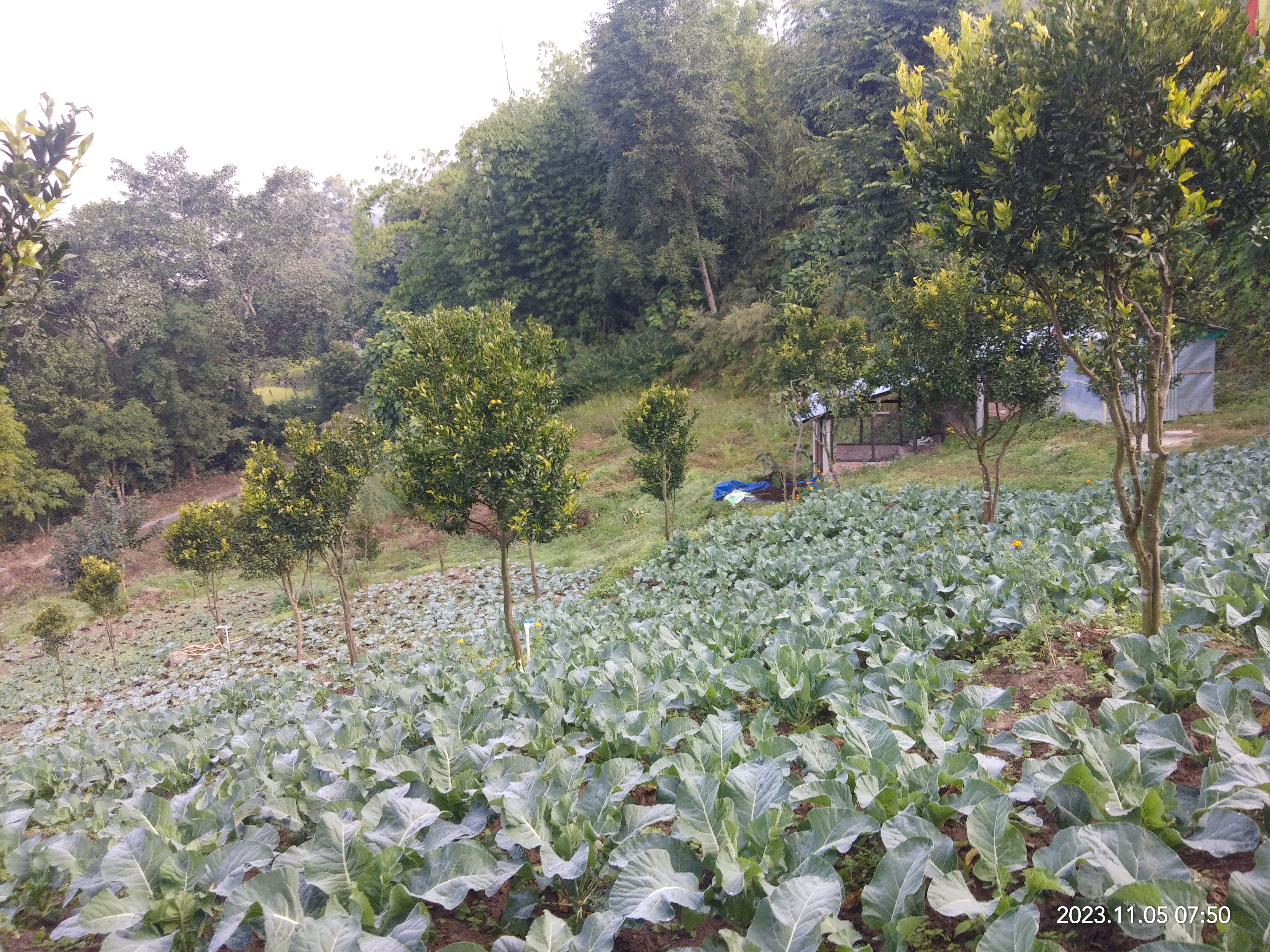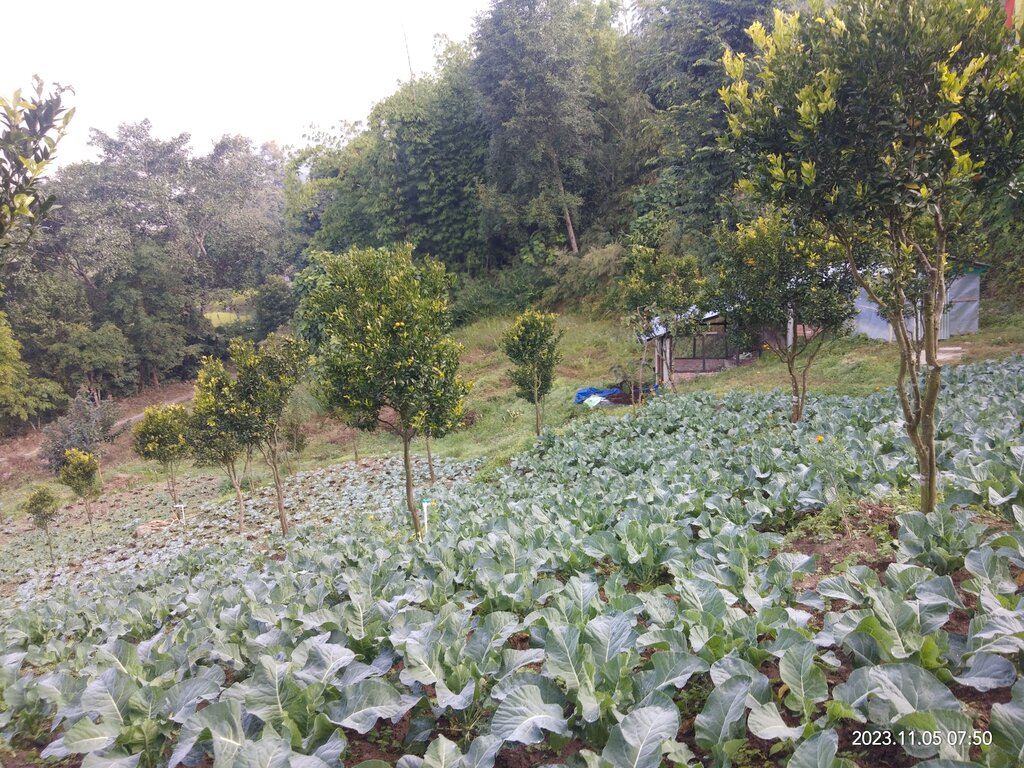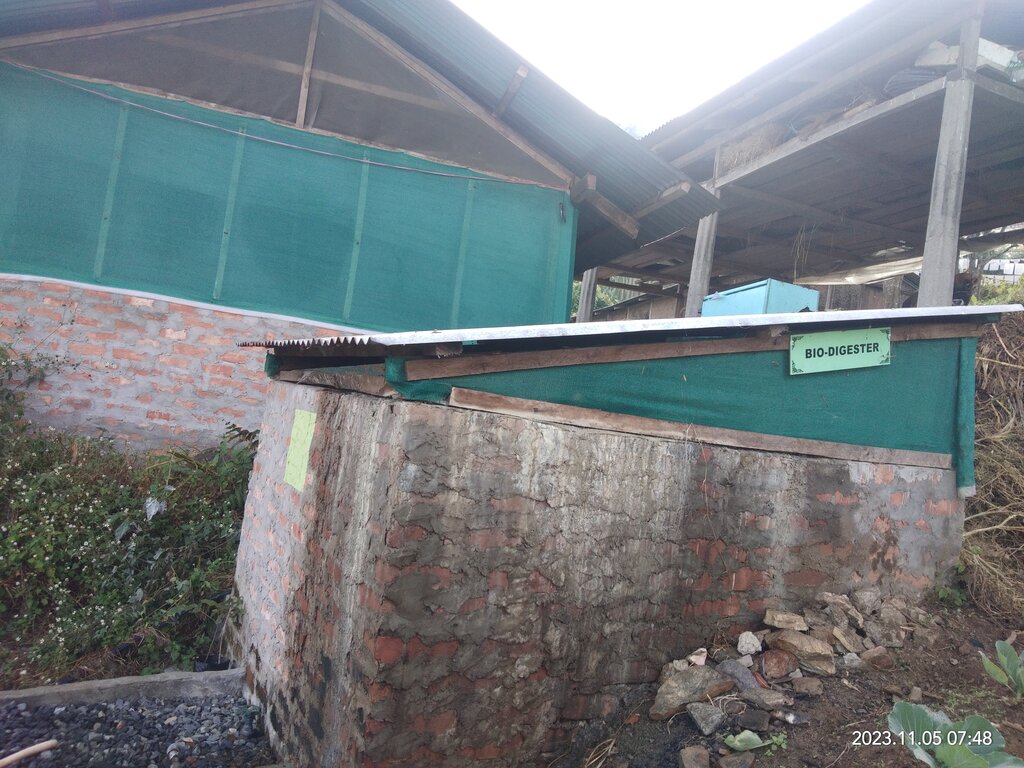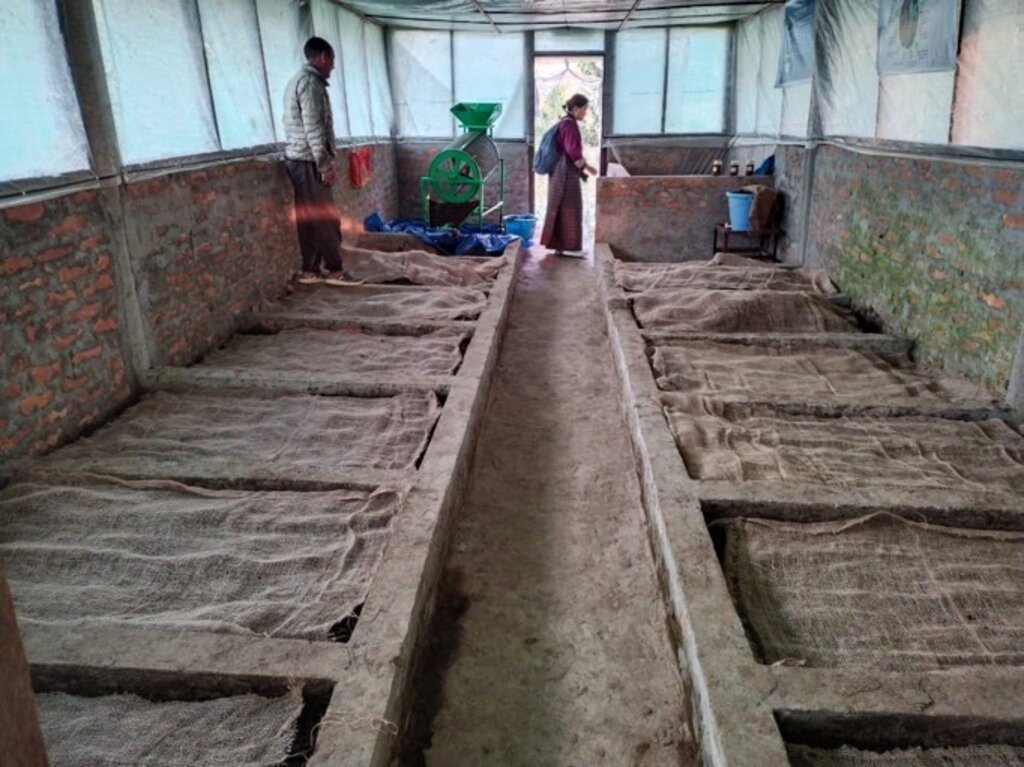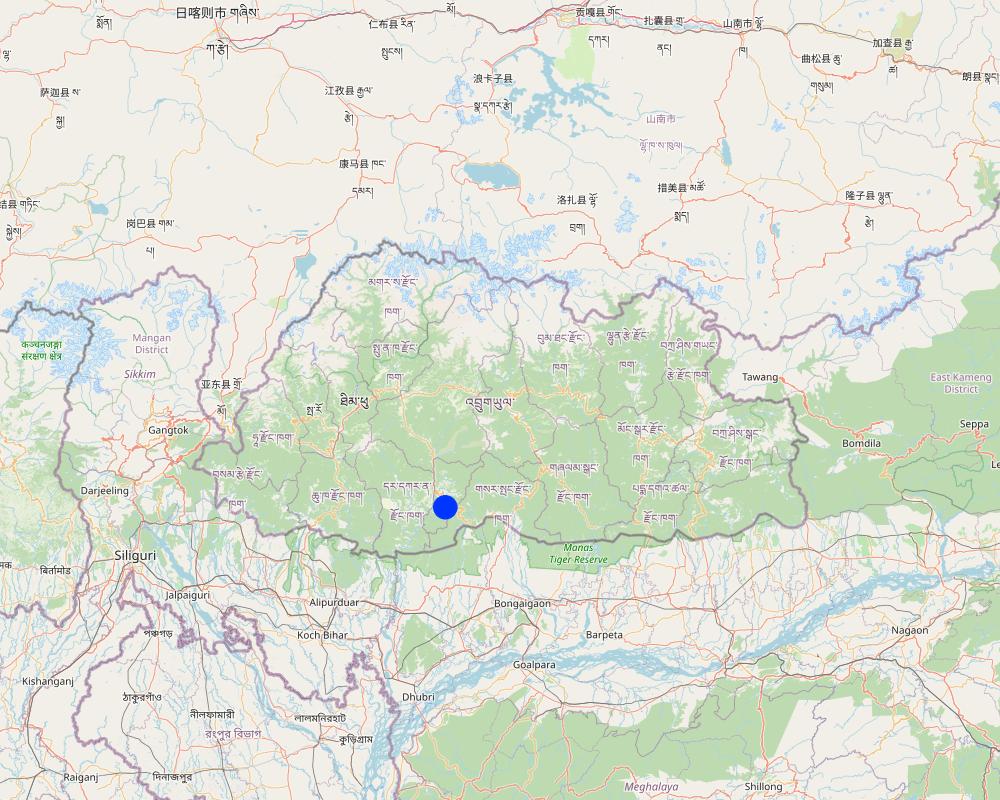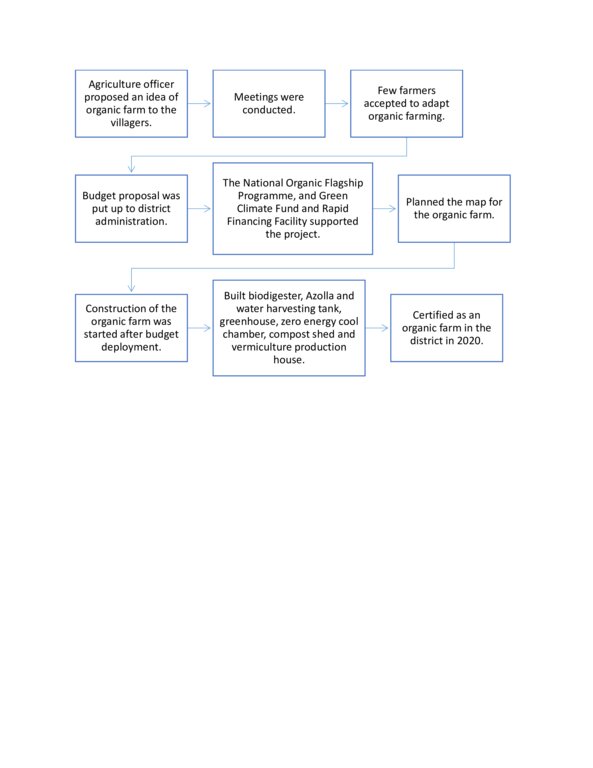Integrated Model Farm to Demonstrate Organic Technologies [Bhutan]
- Creation:
- Update:
- Compiler: Tshering Yangzom
- Editor: Kuenzang Nima
- Reviewers: William Critchley, Rima Mekdaschi Studer
Organic Agriculture Hub
approaches_6867 - Bhutan
View sections
Expand all Collapse all1. General information
1.2 Contact details of resource persons and institutions involved in the assessment and documentation of the Approach
Key resource person(s)
land user:
Ghising Meena
17438424
Mendrelgang, Tsirang Dzongkhag
Bhutan
land user:
Tamang Bishnu Maya
17820762
Mendrelgang, Tsirang Dzongkhag
Bhutan
land user:
Ghising Lhasang Dolma
17236486
Mendrelgang, Tsirang Dzongkhag
Bhutan
land user:
Moktan Krishna Bahadur
17527973
Mendrelgang, Tsirang Dzongkhag
Bhutan
land user:
Moktan Phurba
17438424
Mendrelgang, Tsirang Dzongkhag
Bhutan
Name of project which facilitated the documentation/ evaluation of the Approach (if relevant)
Strengthening national-level institutional and professional capacities of country Parties towards enhanced UNCCD monitoring and reporting – GEF 7 EA Umbrella II (GEF 7 UNCCD Enabling Activities_Umbrella II)Name of the institution(s) which facilitated the documentation/ evaluation of the Approach (if relevant)
National Soil Services Centre, Department of Agriculture, Ministry of Agriculture & Livestock (NSSC) - Bhutan1.3 Conditions regarding the use of data documented through WOCAT
When were the data compiled (in the field)?
17/07/2023
The compiler and key resource person(s) accept the conditions regarding the use of data documented through WOCAT:
Yes
2. Description of the SLM Approach
2.1 Short description of the Approach
The integrated model farm approach to organic farming incorporates various agricultural practices and technologies to optimize productivity and maximize sustainability while reducing negative environmental impacts.
2.2 Detailed description of the Approach
Detailed description of the Approach:
This integrated model farm incorporates and demonstrates various principles and practices of organic farming. Such a farm utilizes diverse cropping systems, including crop rotation and intercropping, to promote diversity and reduce monoculture. These cropping systems contribute to improved soil health, reduced pests and diseases, and enhanced overall ecosystem resilience. Organic farming places significant emphasis on soil health, with integrated model farms using compost, vermicompost, and farmyard manure (FYM), as well as practices such as green manuring, mulching, and cover cropping. Livestock are also an integral part of these farms, contributing to nutrient cycling, weed control, and soil improvement. Overall, organic integrated model farms aim to reduce negative environmental impacts and promote sustainability.
The Organic Agriculture Hub in Mendrelgang Gewog, located in Tsirang Dzongkhag, has been established to support Bhutan's vision of becoming 100% organic. This hub is situated on private farmland spanning 8 acres (3.2 ha) and features various facilities, including a biodigester, azolla (an aquatic fern) and water harvesting tank, greenhouse, zero-energy cooling chamber, compost shed, and a vermiculture production house. Two types of worms, red wigglers and African night crawlers, are used for vermicompost production. Additionally, the hub serves as an educational center for researchers, farmers, and students. It is managed by the landowner, Phurba Moktan.
The establishment of the hub involved multiple stakeholders, including local organizations, the National Organic Flagship Programme, the United Nations Development Programme (UNDP) - and land users. The National Organic Flagship Programme, Green Climate Fund, and Rapid Financing Facility under UNDP provided support for the project, which cost more than US$ 3500. The local administration secured funds, and agriculture and livestock officials offered technical assistance to the land users, who conducted fieldwork related to organic production.
The establishment of the hub followed a systematic approach, starting with the development of a clear vision and objectives centered on sustainability, biodiversity conservation, and the promotion of organic farming principles. Site selection and analysis took into account factors like soil quality, water availability, and proximity to markets. The farm layout was designed to optimize space utilization and support biodiversity, with the inclusion of a biodigester, water harvesting tank, vermiculture facilities, compost pit and a greenhouse.
The benefits of this approach include raising awareness about transitioning to organic farming through the model farm - and learning the associated practices. However, one disadvantage of organic farming is that it can be more labour-intensive than conventional practices.
2.3 Photos of the Approach
2.5 Country/ region/ locations where the Approach has been applied
Country:
Bhutan
Region/ State/ Province:
Tsirang
Further specification of location:
Mendrelgang
Comments:
Commonly known as Organic Agriculture Hub.
Map
×2.6 Dates of initiation and termination of the Approach
Indicate year of initiation:
2019
Comments:
Still functioning
2.7 Type of Approach
- project/ programme based
2.8 Main aims/ objectives of the Approach
-Promote organic farming through the use of organic technologies and practices.
2.9 Conditions enabling or hindering implementation of the Technology/ Technologies applied under the Approach
collaboration/ coordination of actors
- enabling
The land users collectively carry out the fieldwork.
knowledge about SLM, access to technical support
- enabling
The ADAO, Gewog Livestock Extension Officer, and Agriculture Extension officer assist land users in soil management practices, preparation of organic manure and livestock rearing and management. The land users engage in crop-livestock integrated farming, with ongoing support and advice from the extension agents.
markets (to purchase inputs, sell products) and prices
- enabling
The land users have improved access to the market as the farm produce is organic and in demand by different consumers.
workload, availability of manpower
- enabling
The land users work collectively so the workload is shared and workload per person is minimized.
3. Participation and roles of stakeholders involved
3.1 Stakeholders involved in the Approach and their roles
- local land users/ local communities
Dzongkhag Administration, Tsirang, BFDA, Dzongkhag Agriculture Officer, Dzongkhag Livestock Officer, Gewog Agriculture Extension Officer, Gewog Livestock Extension Officer, National Organic Flagship Programme, UNDP, and the land users.
The National Organic Flagship Programme, and Green Climate Fund and Rapid Financing Facility under UNDP supported the project financially. The hub was built at the cost of more than Nu 3 Lakhs. The Dzongkhag Administration sought funds.
The Dzongkhag agriculture and livestock officials render technical services to the land users. The land users carry out fieldwork such as growing crops, rearing animals, and producing organic manures.
- SLM specialists/ agricultural advisers
ADAO, Agriculture Extension Officer
The ADAO and Agriculture Extension Officer provides technical support to the land users.
- national government (planners, decision-makers)
National Organic Flagship Programme
The National Organic Flagship Programme supported the project financially.
- international organization
UNDP
The Green Climate Fund and Rapid Financing Facility under UNDP supported the project financially.
3.2 Involvement of local land users/ local communities in the different phases of the Approach
| Involvement of local land users/ local communities | Specify who was involved and describe activities | |
|---|---|---|
| initiation/ motivation | external support | The idea of establishing the Organic Agriculture Hub was proposed by the Assistant Dzongkhag Agriculture Officer. Subsequently, the ADAO and Extension teams incorporated their suggestions into his farm. |
| planning | interactive | The Organic Agriculture Hub's complete establishment was a collaborative effort involving the land users, the Dzongkhag administration, Dzongkhag and Gewog agriculture officials. |
| implementation | interactive | The land users, Dzongkhag administration, Dzongkhag and Gewog agriculture officials implemented the entire Organic Agriculture Hub establishment. |
| monitoring/ evaluation | interactive | Land users, ADAO, NCOA and BFDA officials, as well as the Agriculture Extension Officer, are jointly monitoring the hub. |
3.3 Flow chart (if available)
3.4 Decision-making on the selection of SLM Technology/ Technologies
Were decisions on the selection of the Technology(ies) made:
- The idea for establishing the Organic Agriculture Hub and the identification of organic technologies and practices to be adopted by the land users were initiated by the Assistant Dzongkhag Agriculture Officer and the Gewog Agriculture Extension Officer.
Explain:
The idea for establishing the Organic Agriculture Hub and the identification of organic technologies and practices to be adopted by the land users were initiated by the Assistant Dzongkhag Agriculture Officer and the Gewog Agriculture Extension Officer.
Specify on what basis decisions were made:
- personal experience and opinions (undocumented)
4. Technical support, capacity building, and knowledge management
4.1 Capacity building/ training
Was training provided to land users/ other stakeholders?
Yes
Specify who was trained:
- land users
If relevant, specify gender, age, status, ethnicity, etc.
Both men and women.
Form of training:
- demonstration areas
Subjects covered:
Preparation of biochar, rain water harvesting, composting and azolla production.
4.2 Advisory service
Do land users have access to an advisory service?
Yes
Specify whether advisory service is provided:
- on land users' fields
Describe/ comments:
The advisory service and assistance is provided by ADAO, officials from Agriculture Research and Development Center (ARDC) in Bajo and Gewog Agriculture Extension Officer.
4.3 Institution strengthening (organizational development)
Have institutions been established or strengthened through the Approach?
- yes, moderately
Specify the level(s) at which institutions have been strengthened or established:
- local
Describe institution, roles and responsibilities, members, etc.
The approach has promoted collaboration between research center and the local government.
Specify type of support:
- capacity building/ training
Give further details:
Research center provides technical assistance to the land users on various agricultural technologies and practices. The farm serves as an educational or organic training centre for interested farmers, researchers, and students.
4.4 Monitoring and evaluation
Is monitoring and evaluation part of the Approach?
Yes
If yes, is this documentation intended to be used for monitoring and evaluation?
No
4.5 Research
Was research part of the Approach?
No
5. Financing and external material support
5.1 Annual budget for the SLM component of the Approach
Indicate the annual budget for the SLM component of the Approach in US$:
2914.63
Comments (e.g. main sources of funding/ major donors):
1. 70% of the cost by RGoB/NOFP: 281220.00
2. 30% of the cost sharing by farmers: 84,367.00
3. GCF: Compost shed and biochar materials
5.2 Financial/ material support provided to land users
Did land users receive financial/ material support for implementing the Technology/ Technologies?
Yes
If yes, specify type(s) of support, conditions, and provider(s):
Financial support with construction materials (cement, CGI sheet, iron rods, water pump, pipes and syntax) were provided.
5.3 Subsidies for specific inputs (including labour)
- equipment
| Specify which inputs were subsidised | To which extent | Specify subsidies |
|---|---|---|
| machinery | partly financed | |
- agricultural
| Specify which inputs were subsidised | To which extent | Specify subsidies |
|---|---|---|
| seeds | fully financed | |
- construction
| Specify which inputs were subsidised | To which extent | Specify subsidies |
|---|---|---|
| stone | partly financed | |
| cement | fully financed | |
- infrastructure
| Specify which inputs were subsidised | To which extent | Specify subsidies |
|---|---|---|
| greenhouse | partly financed | Pre-fabricated green house were provided via cost sharing of 80:20 |
If labour by land users was a substantial input, was it:
- paid in cash
Comments:
Inputs were based on government policy and projects plan
5.4 Credit
Was credit provided under the Approach for SLM activities?
No
5.5 Other incentives or instruments
Were other incentives or instruments used to promote implementation of SLM Technologies?
Yes
If yes, specify:
Plastic mulch was provided to the land users based on their proactiveness in farming.
6. Impact analysis and concluding statements
6.1 Impacts of the Approach
Did the Approach empower local land users, improve stakeholder participation?
- No
- Yes, little
- Yes, moderately
- Yes, greatly
Both local communities and those from outside have benefited from the Organic Hub through participation in planning and implementation
Did the Approach help land users to implement and maintain SLM Technologies?
- No
- Yes, little
- Yes, moderately
- Yes, greatly
The land users have implemented a range of organic farming practices, including crop rotation, companion planting, intercropping, composting (including vermicomposting), biochar and bokashi preparations, and mulching. These practices collectively contribute to enhancing soil fertility. Additionally, the land users are involved in protected agriculture through the use of greenhouses.
Did the Approach improve knowledge and capacities of land users to implement SLM?
- No
- Yes, little
- Yes, moderately
- Yes, greatly
The implementation of Sustainable Land Management (SLM) has led land user to enhance his knowledge in both crop diversification and fertility aspects, thereby making a significant contribution to sustainable livelihoods in farming.
Did the Approach build/ strengthen institutions, collaboration between stakeholders?
- No
- Yes, little
- Yes, moderately
- Yes, greatly
The existence of technology within the organic hub promotes collaboration among universities, research centers, and local government. Furthermore, the farm also functions as a technology demonstration center for visitors.
Did the Approach improve access to markets?
- No
- Yes, little
- Yes, moderately
- Yes, greatly
The market opportunities have improved as the farm produces organic produce which is preferred by consumers.
6.2 Main motivation of land users to implement SLM
- increased production
Increase production through the use of different organic farming technologies and practices.
- reduced land degradation
Reduce land degradation through the use of different organic farming technologies and practices.
- environmental consciousness
Produce farm produce through the use of different organic farming technologies and practices instead of resorting to chemicals that have detrimental effects on the environment.
6.3 Sustainability of Approach activities
Can the land users sustain what has been implemented through the Approach (without external support)?
- yes
If yes, describe how:
Land users will achieve self-sustainability without the need for external support, as their existing farming practices have been diversified and integrated.
6.4 Strengths/ advantages of the Approach
| Strengths/ advantages/ opportunities in the land user’s view |
|---|
| Creating awareness about going organic through model farm. |
| The soil is safeguarded and maintains its health by refraining from using chemicals like pesticides, herbicides, and fertilisers in the farming process. This practice ensures the long-term preservation of soil fertility. |
| Strengths/ advantages/ opportunities in the compiler’s or other key resource person’s view |
|---|
| Organic technologies promote farm sustainability. |
6.5 Weaknesses/ disadvantages of the Approach and ways of overcoming them
| Weaknesses/ disadvantages/ risks in the land user’s view | How can they be overcome? |
|---|---|
| Reluctance to adopt the latest technology | Raising awareness and showcasing technology to the users |
| Sustainability of technology | Enhancing skills and extending knowledge with appropriate support |
7. References and links
7.1 Methods/ sources of information
- field visits, field surveys
5
- interviews with land users
5
7.3 Links to relevant information which is available online
Title/ description:
Organic hub for an organic Bhutan
URL:
https://kuenselonline.com/organic-hub-for-an-organic-bhutan/
Title/ description:
Agriculture organic hub to help achieve country’s 100 percent organic goal
URL:
http://www.bbs.bt/news/?p=179098
Links and modules
Expand all Collapse allLinks
No links
Modules
No modules


